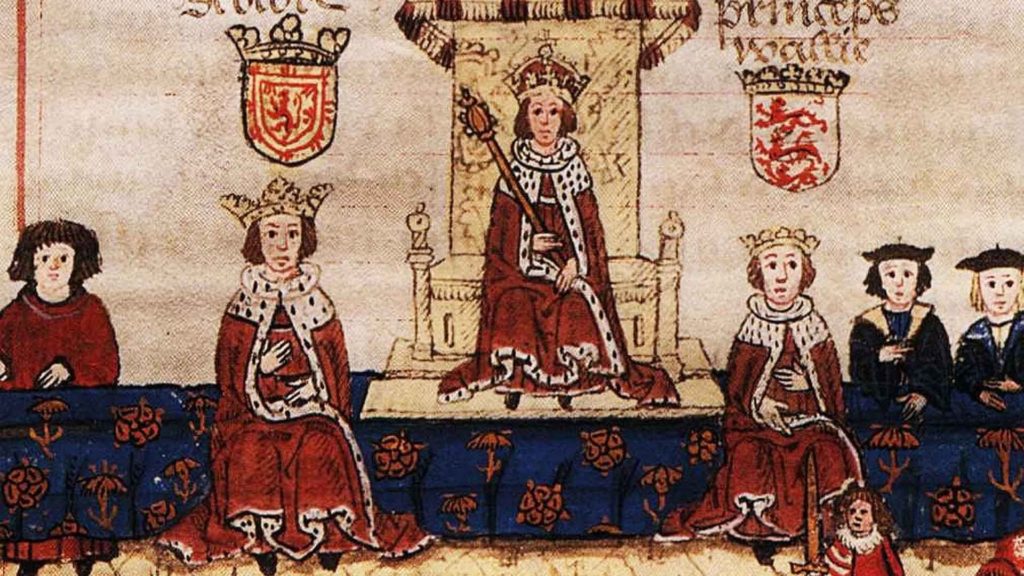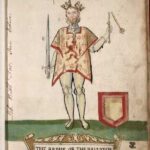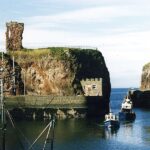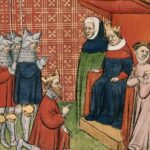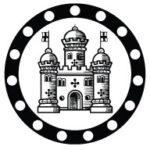In the late 13th century, England went to war with its northern neighbour, the Kingdom of Scotland. After the Battle of Dunbar in 1296, Berkhamsted Castle was used to imprison a number of prominent Scottish knights and a cousin of John Balliol, King of Scots. Like many other strongholds of King Edward I of England, Berkhamsted played an important part in the Scottish Wars of Independence, a conflict that was set in motion by the death of an infant queen.
Margaret, Queen of Scotland had acceded to the Scottish throne in 1286 at the age of 3. Known as the “Maid of Norway”, she was the daughter of King Eric II of Norway and Margaret of Scotland. When Margaret died in September 1290 aged only 7, there was no clear successor to the Scottish throne.
Before her death, and notwithstanding her young age, her father and the Scottish leaders had negotiated her marriage to Edward of Caernarfon, son of King Edward I of England, and a papal dispensation was issued on 16 November 1289 to allow this to take place. She was finally sent from her home in Norway to Great Britain in September 1290, but died in transit at Orkney, sparking off the succession dispute among thirteen competitors for the crown of Scotland.
After two years of disputes, and without a monarch to rule Scotland, Edward I was asked to arbitrate the competing claims. Edward I called a series of meetings with the claimants, who included illegitimate offspring of William The Lion and three descendants of David of Huntingdon, the younger brother of Malcolm IV — John Balliol, John Hastings and Robert de Bruce (father of Robert The Bruce).
John Balliol was chosen by Edward I, and the crown was awarded to him at Berwick on 17 November 1292. He swore fealty to Edward I, was installed as king at Scone and on 26 December at Newcastle upon Tyne, Northumberland, and did homage to Edward I for the kingdom of Scotland.
However, Edward I soon made it clear that he regarded Scotland as his vassal state. Balliol was too weak to resist, and the Scots resented Edward’s demands. When in 1294 Edward instructed them to supply soldiers for his war with France, they set up a council of ecclesiastics and noblemen to rule instead of Balliol, although in his name. They then made a defensive alliance with Philip IV of France against England. This Treaty marked the formal beginning of the ‘Auld Alliance’ between Scotland and France, which was to last for nearly 300 years. Outraged, Edward I raised an army to deal with the threat and by March 1296 the two countries were at war.
The Scots launched a failed attack on Carlisle Castle on 26 March 1296, but this was followed by a brutal English assault on Berwick on 30 March. The sacking of Berwick, Scotland’s largest port and a thriving mercantile community, was designed to awe King John into submission. After one month militarising Berwick, Edward commenced preparations for penetration into southern Scotland. A key installation along the coastal road was Dunbar Castle.
Although owned by Patrick, Earl of March – who supported Edward I – the castle itself had been handed over by the Earl’s wife, Marjory Comyn, to the forces of King John. The castle was besieged by John de Warenne, Earl of Surrey prompting the Scottish garrison to send a frantic plea for help to King John. He duly detached the mounted elements of his army, under the command of John Comyn, but the subsequent battle on 27 April 1296 was a disaster, with the Scots routed and over 100 high status prisoners taken. With the arrival of Edward I and the main English army on 28 April 1296, Dunbar Castle surrendered to the English.
At the order of Edward I, on 16 May 1296, the high-status prisoners from the Battle of Dunbar were removed to various locations in England. Sent to Berkhamsted Castle were the Scottish knights John of Glenurquhart, William de Haya and Walter of Berkeley, together with three esquires: James of Menteith, Luke son of Donald of Lennox and John of Cluny of Fife.
Later that year John Balliol capitulated to Edward I and, in surrendering, submitted himself to a protracted abasement. At Kincardine Castle on 2 July 1296 he confessed to rebellion and prayed for forgiveness. Five days later in the kirkyard of Stracathro he abandoned the treaty with the French. The final humiliation came at Montrose on 8 July. Dressed for the occasion John was ceremoniously stripped of the vestments of royalty. Antony Bek, the Bishop of Durham, ripped the red and gold arms of Scotland from his surcoat, thus bequeathing to history the nickname Toom Tabard (“empty coat”) by which John has been known to generations of Scottish schoolchildren.
John Balliol was forced to abdicate on 10 July 1296, and he and his son Edward were sent south into captivity at the Tower of London. Thousands of other Scottish magnates would subsequently pay homage direct to Edward I at a gathering at Berwick Castle. There then followed a 10 year interregnum during which Scotland was ruled remotely by Edward. The Stone of Scone was removed to Westminster where it remained for 700 years, until 1996.
In 1299, John Balliol was released from the Tower and allowed to go to France, where he lived on his family estates at Bailleul until his death in April 1313, at about the age of 63.
Of the prisoners committed to Berkhamsted Castle, John of Glenurquhart was mainprised (i.e. bailed) and released from Berkhamsted Castle on 30 July 1297, and William Hay and Walter Barclay on 28 August 1297. However, the esquires remained in captivity until at least February 1302. As was the custom, each prisoner was to be paid a daily allowance. By the King’s writ, and the order of the Treasurer of the Barons of the Exchequer, this was initially set at 4d. per day, but reduced to 3d. from 20 September 1299 and then to 2d. from 1 July 1301 to at least 26 February 1302.
Alexander, son of Alexander de Balliol (a cousin of John Balliol) was ordered to be transferred to Berkhamsted Castle on 13 October 1301. His warder was explicitly instructed that he should “keep him, but not in irons”, for which the warder would be paid 2d. a day. Alexander Balliol was to receive 4d. per day during his incarceration at Berkhamsted Castle.
William Hay, the fourth Laird of Leys (with lands adjacent to the barony of Erroll, in Perthshire), had reluctantly been dragged into the fighting at Dunbar as a supporter of Robert de Bruce. Having sworn fealty to Edward I, on his release from Berkhamsted Castle he was despatched back to Scotland, and became Edward’s Warden of Ross and Sheriff of Dingwall. He was subsequently recalled by Edward and accompanied him on an expedition to Flanders, pressing the King’s continental interests.
